Prelude to Foundation
by Isaac Asimov
To Jennifer “Green Pencil” Brehl, the best and hardest-working editor in the world.
When I wrote “Foundation,” which appeared in the May 1942 issue of Astounding Science Fiction , I had no idea that I had begun a series of stories that would eventually grow into six volumes and a total of 650,000 words (so far). Nor did I have any idea that it would be unified with my series of short stories and novels involving robots and my novels involving the Galactic Empire for a grand total (so far) of fourteen volumes and a total of about 1,450,000 words.
You will see, if you study the publication dates of these books, that there was a twenty-five-year hiatus, between 1957 and 1982, during which I did not add to this series. This was not because I had stopped writing. Indeed, I wrote full-speed throughout the quarter century, but I wrote other things. That I returned to the series in 1982 was not my own notion but was the result of a combination of pressures from readers and publishers that eventually became overwhelming.
In any case, the situation has become sufficiently complicated for me to feel that the readers might welcome a kind of guide to the series, since they were not written in the order in which (perhaps) they should be read.
The fourteen books, all published by Doubleday, offer a kind of history of the future, which is, perhaps, not completely consistent, since I did not plan consistency to begin with. The chronological order of the books, in terms of future history (and not of publication date), is as follows:
1. The Complete Robot (1982). This is a collection of thirty-one robot short stories published between 1940 and 1976 and includes every story in my earlier collection I, Robot (1950). Only one robot short story has been written since this collection appeared. That is “Robot Dreams,” which has not yet appeared in any Doubleday collection.
2. The Caves of Steel (1954). This is the first of my robot novels.
3. The Naked Sun (1957). The second robot novel.
4. The Robots of Dawn (1983). The third robot novel.
5. Robots and Empire (1985). The fourth robot novel.
6. The Currents of Space (1952). This is the first of my Empire novels.
7. The Stars, Like Dust — (1951). The second Empire novel.
8. Pebble in the Sky (1950). The third Empire novel.
9. Prelude to Foundation (1988). This is the first Foundation novel (although it is the latest written, so far).
10. Foundation (1951). The second Foundation novel. Actually, it is a collection of four stories, originally published between 1942 and 1944, plus an introductory section written for the book in 1949.
11. Foundation and Empire (1952). The third Foundation novel, made up of two stories, originally published in 1945.
12. Second Foundation (1953). The fourth Foundation novel, made up of two stories, originally published in 1948 and 1949.
13. Foundation’s Edge (1982). The fifth Foundation novel.
14. Foundation and Earth (1983). The sixth Foundation novel.
Will I add additional books to the series? I might. There is room for a book between Robots and Empire (5) and The Currents of Space (6) and between Prelude to Foundation (9) and Foundation (10) and of course between others as well. And then I can follow Foundation and Earth (14) with additional volumes—as many as I like.
Naturally, there’s got to be some limit, for I don’t expect to live forever, but I do intend to hang on as long as possible.
CLEON I— . . . The last Galactic Emperor of the Entun dynasty. He was born in the year 11,988 of the Galactic Era, the same year in which Hari Seldon was born. (It is thought that Seldon’s birthdate, which some consider doubtful, may have been adjusted to match that of Cleon, whom Seldon, soon after his arrival on Trantor, is supposed to have encountered.)
Having succeeded to the Imperial throne in 12,010 at the age of twenty-two, Cleon I’s reign represented a curious interval of quiet in those troubled times. This is undoubtedly due to the skills of his Chief of Staff, Eto Demerzel, who so carefully obscured himself from public record that little is known about him.
Cleon himself . . .
ENCYCLOPEDIA GALACTICA
* All quotations from the Encyclopedia Galactica here reproduced are taken from the 116th Edition, published 1,020 F.E. by the Encyclopedia Galactica Publishing Co., Terminus, with permission of the publishers.
Suppressing a small yawn, Cleon said, “Demerzel, have you by any chance ever heard of a man named Hari Seldon?”
Cleon had been Emperor for just over ten years and there were times at state occasions when, dressed in the necessary robes and regalia, he could manage to look stately. He did so, for instance, in the holograph of himself that stood in the niche in the wall behind him. It was placed so that it clearly dominated the other niches holding the holographs of several of his ancestors.
The holograph was not a totally honest one, for though Cleon’s hair was light brown in hologram and reality alike, it was a bit thicker in the holograph. There was a certain asymmetry to his real face, for the left side of his upper lip raised itself a bit higher than the right side, and this was somehow not evident in the holograph. And if he had stood up and placed himself beside the holograph, he would have been seen to be 2 centimeters under the 1.83-meter height that the image portrayed—and perhaps a bit stouter.
Of course, the holograph was the official coronation portrait and he had been younger then. He still looked young and rather handsome, too, and when he was not in the pitiless grip of official ceremony, there was a kind of vague good nature about his face.
Demerzel said, with the tone of respect that he carefully cultivated, “Hari Seldon? It is an unfamiliar name to me, Sire. Ought I to know of him?”
“The Minister of Science mentioned him to me last night. I thought you might.”
Demerzel frowned slightly, but only very slightly, for one does not frown in the Imperial presence. “The Minister of Science, Sire, should have spoken of this man to me as Chief of Staff. If you are to be bombarded from every side—”
Cleon raised his hand and Demerzel stopped at once. “Please, Demerzel, one can’t stand on formality at all times. When I passed the Minister at last night’s reception and exchanged a few words with him, he bubbled over. I could not refuse to listen and I was glad I had, for it was interesting.”
“In what way interesting, Sire?”
“Well, these are not the old days when science and mathematics were all the rage. That sort of thing seems to have died down somehow, perhaps because all the discoveries have been made, don’t you think? Apparently, however, interesting things can still happen. At least I was told it was interesting.”
“By the Minister of Science, Sire?”
“Yes. He said that this Hari Seldon had attended a convention of mathematicians held here in Trantor—they do this every ten years, for some reason—and he said that he had proved that one could foretell the future mathematically.”
Demerzel permitted himself a small smile. “Either the Minister of Science, a man of little acumen, is mistaken or the mathematician is. Surely, the matter of foretelling the future is a children’s dream of magic.”
Читать дальше
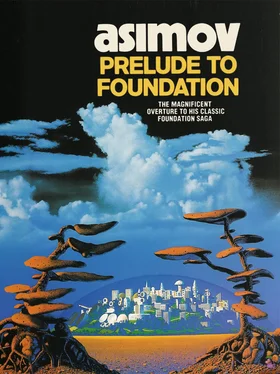
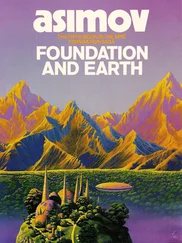

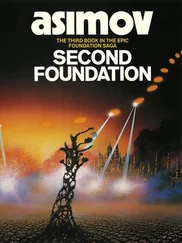
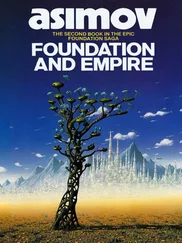
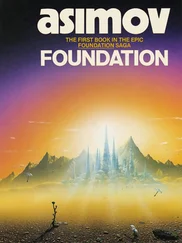


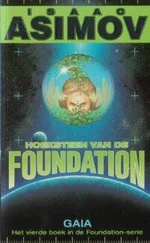

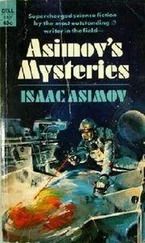
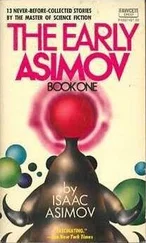
![Айзек Азимов - Прелюдия к Основанию [= Прелюдия к Академии // Prelude to Foundation]](/books/435122/ajzek-azimov-prelyudiya-k-osnovaniyu-prelyudiya-k-ak-thumb.webp)